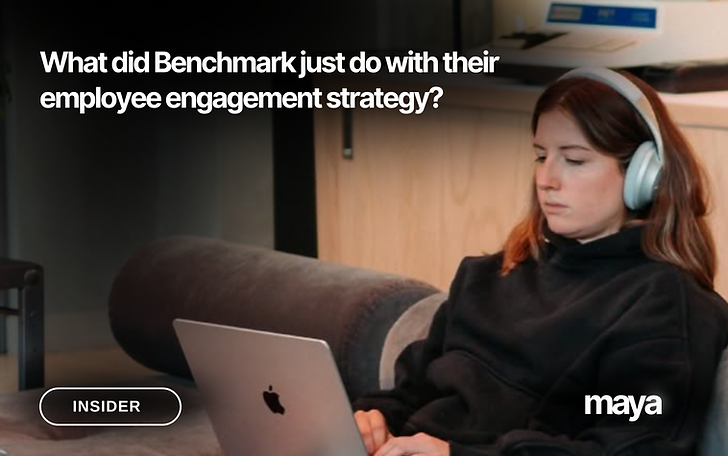Maya Research: The Business of Culture I 2025 I Download Now
Inside Benchmark’s Global Push to Redefine Employee Engagement
I DEEP DIVE INSIDER PROFILES
Rhonda Buseman has spent her career shaping workplaces where people feel connected, motivated, and valued. As Chief Human Resources Officer at Benchmark, a global manufacturing company with more than 12,000 employees across eight countries, she leads efforts to put culture and employee engagement at the center of business strategy.
Recently, she joined Lucie Spearing, Media Lead at Maya, for a conversation about how Benchmark is rethinking the employee experience. Their discussion revealed how a data-driven approach, combined with thoughtful leadership, is helping the company strengthen culture and performance at the same time.
At Benchmark, engagement is not treated as an extra initiative. It is one of five pillars of the company’s strategy, alongside operational and financial goals. The philosophy is straightforward: when people succeed, the business succeeds. “To build a long-term financially successful company, you have to focus on your people,” Rhonda says. “What matters to them, what drives their engagement, and their willingness to give discretionary effort.” For Benchmark, engagement is viewed as a leading indicator of organizational health.
The company’s first global engagement and inclusion survey set the stage for change. Results showed that employees wanted stronger communication about long-term vision and strategy. In response, Benchmark built a dedicated internal communications function, hired a director to lead it, and created campaigns to make participation easy. Posters with QR codes were placed on factory floors. Supervisors wore buttons linking directly to surveys. Messages reached both inboxes and break rooms. Participation quickly increased. In just three years, engagement in surveys rose from 77 percent to 90 percent. For a workforce made up largely of frontline production employees with limited computer access, the result was remarkable.
Rhonda and Lucie also discussed how segmentation plays a critical role. Instead of viewing results in aggregate, Benchmark analyzes feedback by geography, department, and demographic. Maya’s built-in dashboards make it possible to surface these insights instantly, highlighting high-performing sites while flagging areas that need more attention. This capability allows leaders to take targeted actions and design improvements that reflect the diversity of their global workforce.
.png)
Turning data into meaningful change requires more than good intentions. Benchmark bases its approach on McKinsey & Company’s Influence Model, which emphasizes the mindsets and behaviors that drive sustainable change. The framework rests on four actions: leaders model the right behaviors, explain the reasons behind change, establish systems that support progress, and ensure employees receive the training they need.
After each survey cycle, Rhonda brings leaders together for planning sessions. These workshops align insights with business priorities and show leaders how to translate data into clear actions. “This approach takes action planning much further,” she explains. “It is more thoughtful, and we believe it has had a significant impact on our success.”
The focus on engagement is continuous rather than episodic. Each year, Benchmark refreshes its approach to maintain momentum. The results of this commitment are clear. Since 2021, there has been an eight percent increase in employees who believe the company values diversity, a seven percent increase in employees who feel outstanding service is recognized, and an eight percent increase in employees who see communication as open and honest.
Employees also played a direct role in shaping the company’s purpose statement. Benchmark launched a global campaign inviting every employee to complete the phrase: “We help make the world ___, ___, and ___.” The winning response—“We innovate for a healthier, safer, and better connected world to create a brighter future”—now anchors the company’s mission. The statement connects day-to-day work on the factory floor to innovations in medical devices, defense technology, satellites, and 5G infrastructure.
Benchmark’s story demonstrates how culture is created not just in boardrooms but across every site, shift, and team conversation. By making engagement central to its strategy, the company is proving that people-first leadership can drive both culture and performance.
“When you invest in your people, they invest back,” Rhonda says. “That is when the real transformation begins.”

.png)

.png)